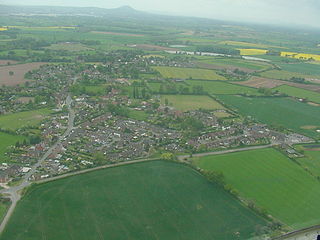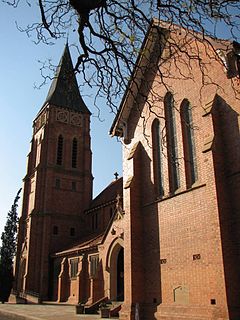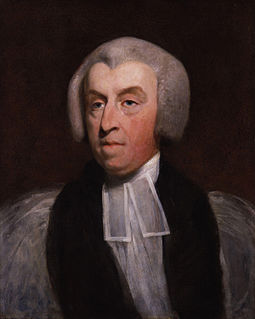
Shropshire is a landlocked historic county in the West Midlands region of England. It is bordered by Wales to the west and the English counties of Cheshire to the north, Staffordshire to the east, Worcestershire to the southeast, and Herefordshire to the south. A unitary authority of the same name was created in 2009, taking over from the previous county council and five district councils, now governed by Shropshire Council. The borough of Telford and Wrekin has been a separate unitary authority since 1998, but remains part of the ceremonial county.

Edgmond is a village in the borough of Telford and Wrekin and ceremonial county of Shropshire, England. The village population at the 2011 Census was 2,062. It lies 1 mile north-west of the town of Newport.
Shropshire was established during the division of Saxon Mercia into shires in the 10th century. It is first mentioned in 1006. After the Norman Conquest it experienced significant development, following the granting of the principal estates of the county to eminent Normans, such as Roger De Montgomery and his son Robert de Bellême.

The Rev. John Ellerton was a hymnodist and hymnologist.

Meole Brace, sometimes known locally as simply MeoleMEE-əl, is a south-western suburb of Shrewsbury, Shropshire, England.
The Venerable Horace Edward Samuel Sneade Lambart, 11th Earl of Cavan, TD, was an Anglo-Irish soldier and Anglican priest.

The Cathedral Church of St Cyprian the Martyr, Kimberley, is the seat of the Bishop of the Kimberley and Kuruman, Anglican Church of Southern Africa. The building was dedicated in 1908, becoming a Cathedral when the Synod of Bishops mandated formation of the new Diocese of Kimberley and Kuruman in October 1911. The first Bishop, the Rt Revd Wilfrid Gore Browne, was enthroned there on 30 June 1912.
William Thomas Gaul (1850–1927) was Rector of All Saints Church, Du Toit's Pan, Kimberley, afterwards of St Cyprian's Church, Kimberley, Rural Dean of Griqualand West, and Archdeacon in what was still the Diocese of Bloemfontein, before being elected the second Bishop of Mashonaland, where he styled himself "the smallest bishop with the largest diocese in Christendom." He officiated at the funeral of Cecil John Rhodes and helped draft the Rhodes Trust Deed.
Neville Arthur Blachley Borton, M.A. was the second rector of St Cyprian's Church, Kimberley, South Africa, serving from 1876–77, being successor to Fr John Witherston Rickards. He afterwards ran a small church school at St Mary's Barkly West, was appointed principal of St Andrew's, Bloemfontein, and subsequently Vicar of Burwell, Cambridge, where he served until 1920.

St Chad's Church occupies a prominent position in Shrewsbury, the county town of Shropshire. The current church building was built in 1792, and with its distinctive round shape and high tower it is a well-known landmark in the town. It faces The Quarry area of parkland, which slopes down to the River Severn. The church is a Grade I listed building.

Folliott Herbert Walker Cornewall was an English bishop of three sees.
The Parish Church of St Mary the Virgin, Barkly West, was for some years the principal Anglican parish on the Diamond Fields, South Africa, and the churches established soon afterwards at the Dry Diggings – what would become Kimberley – were at first mere outstations.

St Mary's Church is a redundant Anglican church in St Mary's Place, Shrewsbury, Shropshire, England. It is recorded in the National Heritage List for England as a designated Grade I listed building, and is under the care of the Churches Conservation Trust, the Trust designated St Mary's as its first Conservation Church in 2015. It is the largest church in Shrewsbury. Clifton-Taylor includes the church in his list of 'best' English parish churches.
Simon Mark Aiken is Dean of Benoni and rector of St Dunstan's Cathedral in the Diocese of the Highveld. He was previously the 12th Dean of Kimberley and rector of St Cyprian's Cathedral, Kimberley, in the Diocese of Kimberley and Kuruman in South Africa. Born in England in 1962, he went to South Africa in 2006, initially as subdean at Bloemfontein Cathedral.

The Parade Shops, formerly the Royal Salop Infirmary, is a specialist shopping centre at St Mary's Place in Shrewsbury, Shropshire, England. It is a Grade II listed building.
The Archdeacon of Salop is a senior ecclesiastical officer in the Church of England Diocese of Lichfield. The incumbent is Paul Thomas.
Douglas Leslie Bartles-Smith was an English Anglican priest: he was the Archdeacon of Southwark from 1985 to 2004.
Hugh Owen was an English churchman and topographer, Archdeacon of Salop from 1821.
William Haye Weekes was Dean of Bloemfontein in South Africa from 1922 to 1940.
Thomas Bucknall Lloyd was Archdeacon of Salop from 1886 until his death.








